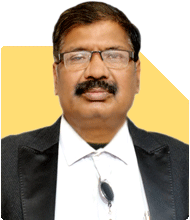Ramalingam Kalirajan |8077 Answers |Ask -Follow
Mutual Funds, Financial Planning Expert - Answered on May 10, 2024
He has an MBA in finance from the University of Madras and is a certified financial planner.
He is the director and chief financial planner at Holistic Investment, a Chennai-based firm that offers financial planning and wealth management advice.... more

I am 50 years old i have an income of 20000 per mont? .i want to save money for my.daughter marriage and for old age pension .where to invest money of 3lakhs for these achievement or goals
With an income of 20,000 per month, saving 3 lakhs might take some time, but it's definitely achievable with proper planning and discipline.
Given your goals, it's essential to strike a balance between safety, growth, and liquidity in your investments. Here's what you can consider:
Fixed Deposits (FDs): FDs offer safety and guaranteed returns. You can consider investing a portion of your savings in FDs to ensure capital preservation for your daughter's marriage.
Debt Mutual Funds: Debt mutual funds provide relatively higher returns than FDs while maintaining liquidity. They're suitable for medium-term goals like your daughter's marriage. Opt for funds with a track record of stable returns and low volatility.
Public Provident Fund (PPF): PPF is a popular long-term investment option offering tax benefits and steady returns. It can serve as a retirement corpus for you, providing financial security in your old age.
Senior Citizen Savings Scheme (SCSS): SCSS is designed for individuals above 60 years and offers regular income post-retirement. You can consider investing a portion of your savings in SCSS to build a pension corpus for your old age.
Gold ETFs: Investing in Gold ETFs can provide diversification to your portfolio and act as a hedge against inflation. You can allocate a small portion of your savings to Gold ETFs for long-term wealth preservation.
As you're nearing retirement age, it's crucial to prioritize building a robust retirement corpus alongside saving for your daughter's marriage. Consult with a Certified Financial Planner to create a comprehensive financial plan tailored to your goals and risk profile.
Remember, consistency and discipline are key to achieving your financial aspirations. Keep saving regularly, and you'll steadily progress towards your goals.
Best Regards,
K. Ramalingam, MBA, CFP,
Chief Financial Planner,
www.holisticinvestment.in
You may like to see similar questions and answers below
Sanjeev Govila |458 Answers |Ask -Follow
Financial Planner - Answered on Jan 23, 2024
Ramalingam Kalirajan |8077 Answers |Ask -Follow
Mutual Funds, Financial Planning Expert - Answered on May 06, 2024
Ramalingam Kalirajan |8077 Answers |Ask -Follow
Mutual Funds, Financial Planning Expert - Answered on Jul 15, 2024
Ramalingam Kalirajan |8077 Answers |Ask -Follow
Mutual Funds, Financial Planning Expert - Answered on Jul 19, 2024
Milind Vadjikar |1084 Answers |Ask -Follow
Insurance, Stocks, MF, PF Expert - Answered on Mar 04, 2025
Rajesh Kumar Singh |139 Answers |Ask -Follow
IIT-JEE, GATE Expert - Answered on Mar 04, 2025
Rajesh Kumar Singh |139 Answers |Ask -Follow
IIT-JEE, GATE Expert - Answered on Mar 04, 2025
T S Khurana |387 Answers |Ask -Follow
Tax Expert - Answered on Mar 04, 2025
T S Khurana |387 Answers |Ask -Follow
Tax Expert - Answered on Mar 04, 2025
T S Khurana |387 Answers |Ask -Follow
Tax Expert - Answered on Mar 04, 2025
T S Khurana |387 Answers |Ask -Follow
Tax Expert - Answered on Mar 04, 2025
Mihir Tanna |1026 Answers |Ask -Follow
Tax Expert - Answered on Mar 04, 2025
Milind Vadjikar |1084 Answers |Ask -Follow
Insurance, Stocks, MF, PF Expert - Answered on Mar 04, 2025
Mihir Tanna |1026 Answers |Ask -Follow
Tax Expert - Answered on Mar 04, 2025


























